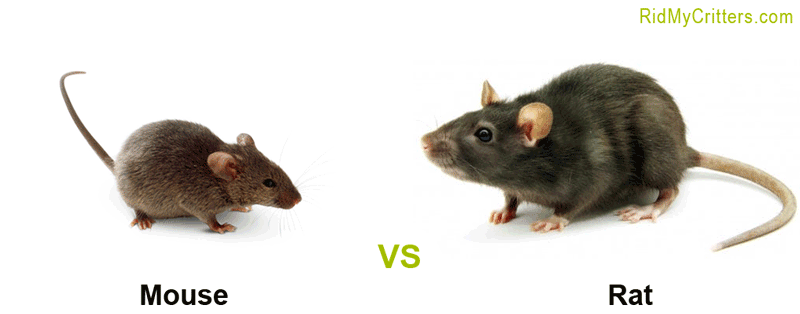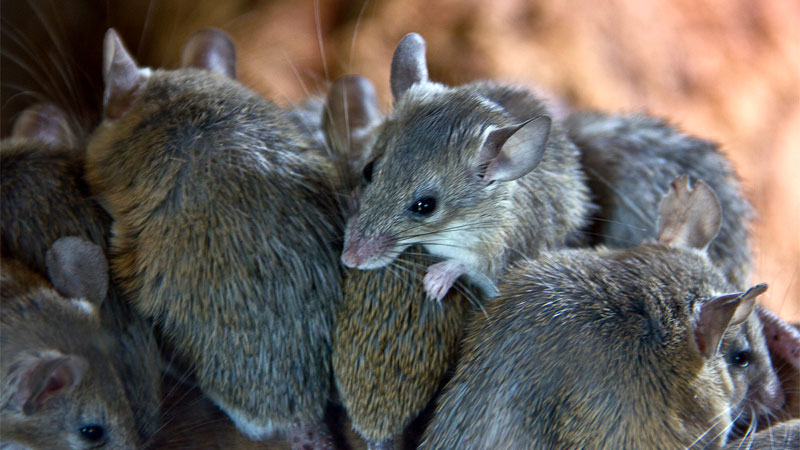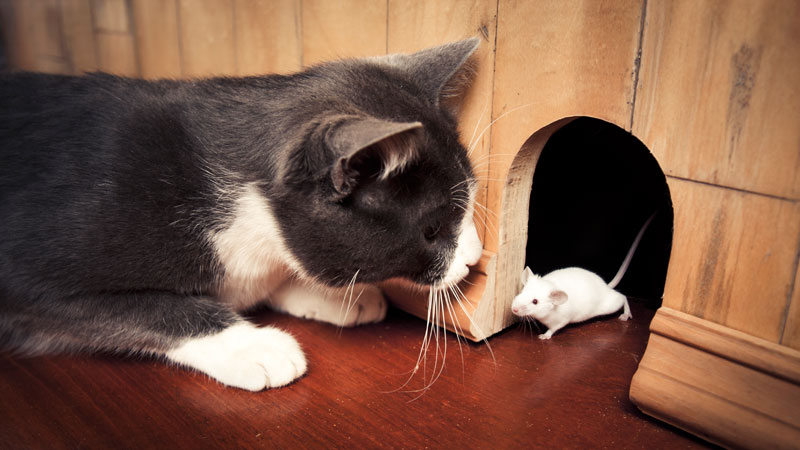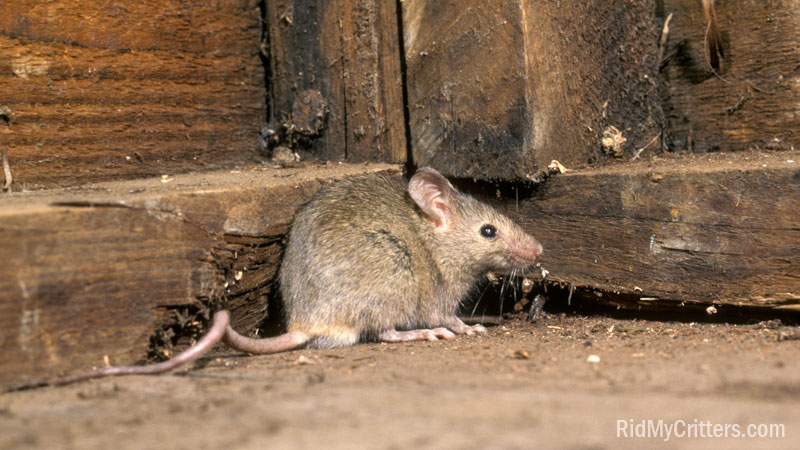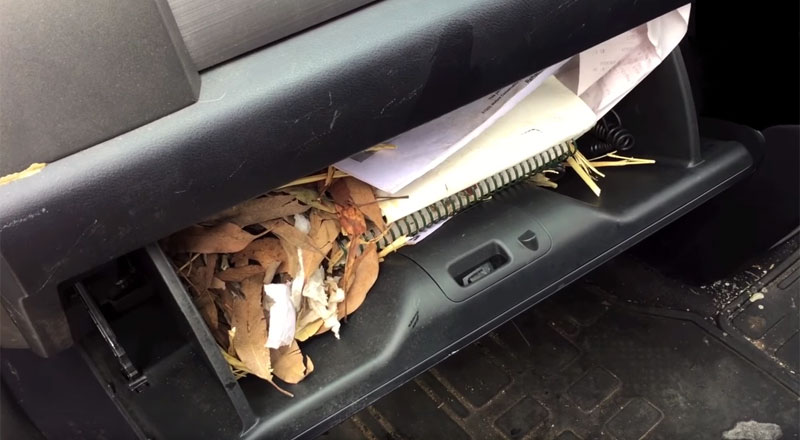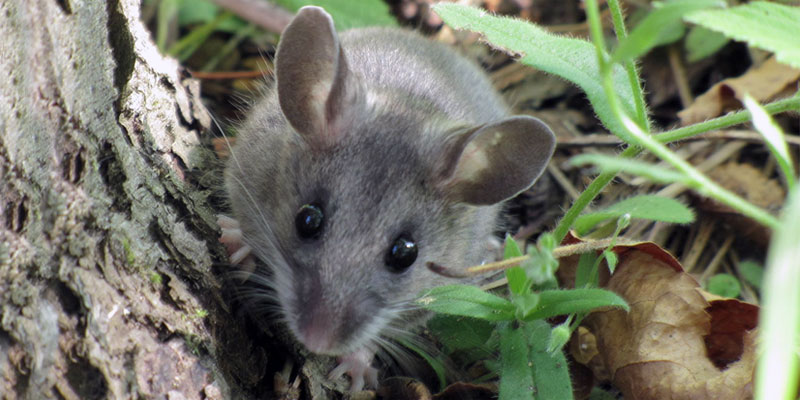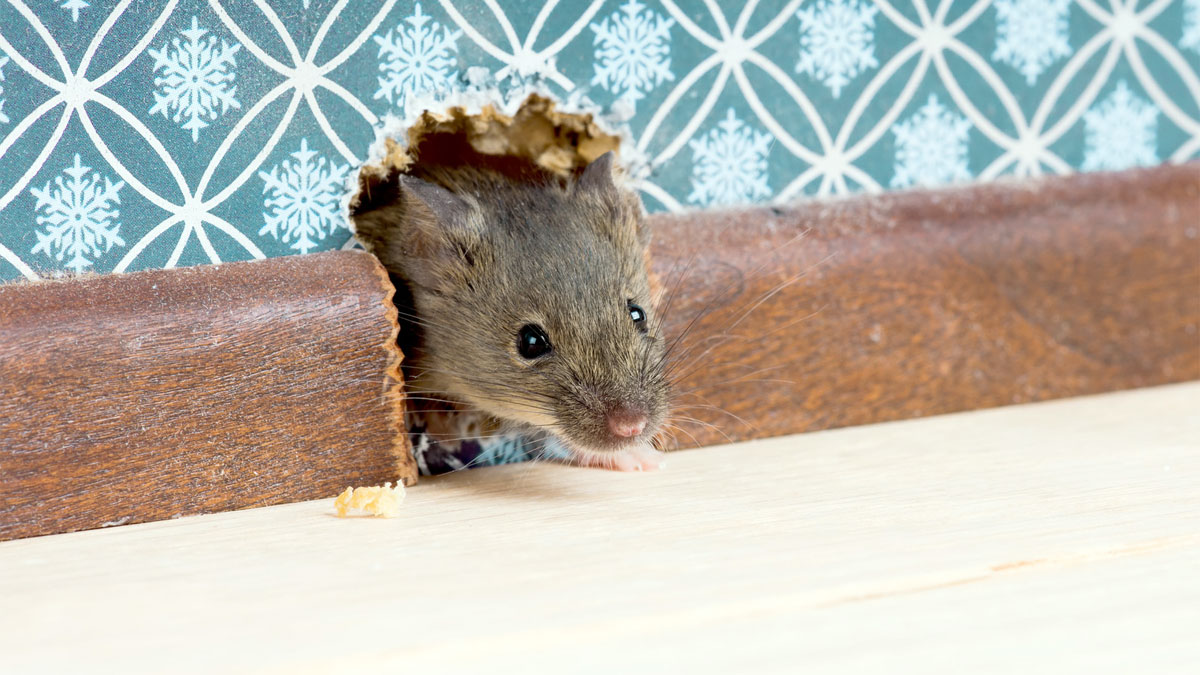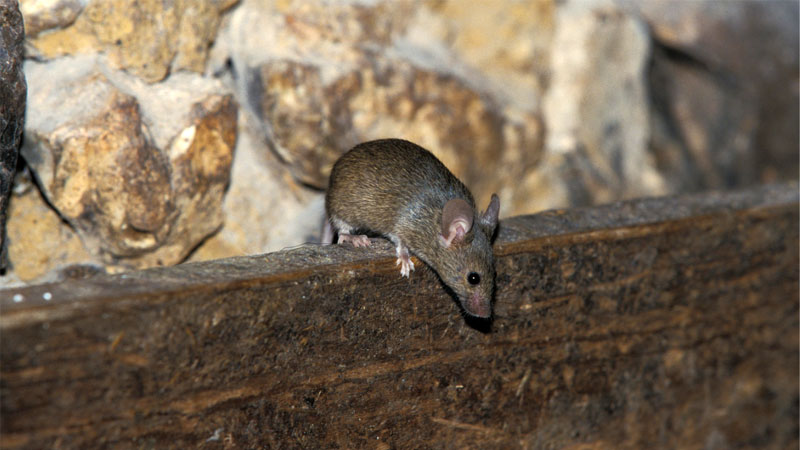There are quite a few rodents out there, some of which are beloved (ex: rabbits) and some loathed. But when it comes to a rodent infestation, people want to get rid of mice far more passionately than even rats.
But are the critters who commissioned our planet really that evil? Let’s take a look at these little furballs, what makes them tick, and how to keep curious mice at bay.
- Female mice have a quick breeding rate to counteract the number of natural predators, meaning an infestation can explode quickly.
- Mice can unintentionally wreak havoc in your home or garden and pose a health risk.
- There are many ways to successfully remove or deter mice, but your mileage will vary with every option.
Getting to Know Mice
Mice are among the most misunderstood and feared critters out there. The problem lies in the fact that mice infestations quickly explode, as well as a long history of bad raps. Of course, that doesn’t mean you should permit or encourage an infestation.
What’s In a Name?
When you think of a mouse, you may or may not be thinking of actual mice. This is because the term is applied to all sorts of critters in the order Rodentia. There’s even a member of the order Dasyuromorphia known as the marsupial mouse.
However, true mice are found in the family Muridae alongside gerbils and rats. Of course there are still many types of mice out in this family.
What Do Mice Look Like
Mice are pretty easy to spot, but there are a lot of minor variations. They’re basically small, furry rodents with a pointed muzzle and small, round ears.
Their tails are usually hairless and tend to be about as long as their body. As with many mammals, a mouse’s fur can be solid, bicolor, or have patches of different colors.
Mice vs Rats
Time to talk about the Murin in the room: rats. Better known as the Old World mice and rats, the subfamily Murinae is home to the genera Rattus and Mus – rats and mice, respectively.
There are true mice and rats outside of these genera. However, all the ones you know best, such as the black rat (Rattus rattus) and house mouse (Mus musculus).
So far, so good, right? Well, not exactly.
Mice and rats are so closely related that they’re able to successfully interbreed. In fact, there’s no scientific distinction between these two rodents beyond a basic concept of size. This means there’s a grey area where one scientist will call a specimen a mouse and another scientist will call it a rat – and neither are wrong!
Signs of a Mouse Infestation
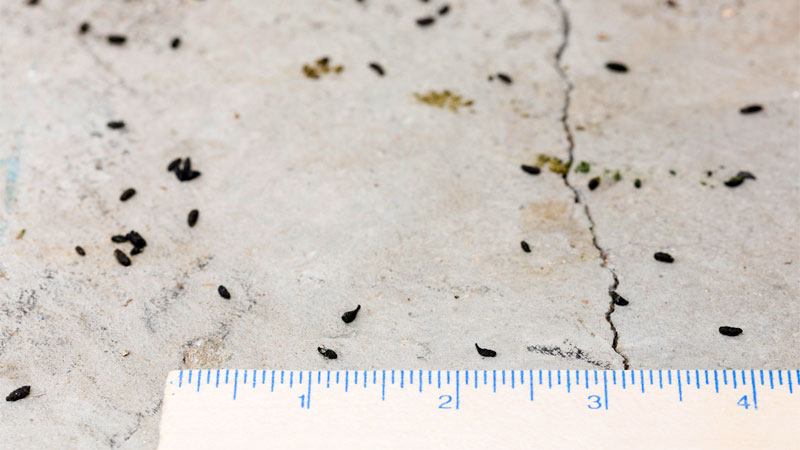
Now that we’ve covered the murky waters of what a mouse is, let’s discuss the telltale signs of mouse activity. As with most pest infestations, there are a few things you can look out for. Just be warned, if you have one mouse, you likely have more.
Dead Mice – Anyone with an active cat will likely be gifted a dead mouse. Be sure to thank your feline benefactor for any mouse carcasses and dispose of them safely.
Free Food Testing – One clear sign of rodent activity is a hole nibbled into dry food packages. There may also be tiny bites missing from food you left on the counter.
Mouse Droppings – Basically, if someone left chocolate cupcake sprinkles on your floor or counter and you weren’t just baking, you probably have mice.
Nesting – There’s a good chance of mice building nests out of sight in your walls. However, in their effort to gather nesting materials (unless they use insulation), you may discover damage to fabrics or shredded materials such as paper.
Wall Noises – Mice in wall cavities can often be identified by faint scratching or squeaking sounds. Just be warned, they can get into dressers and other furniture, so try to home in on where these sounds are coming from.
Are Mice Dangerous?
While unintentional, mice can be the source of numerous health hazards. Fleas are one common health risk.
Additionally, mice droppings can transmit a number of pathogens and contaminate surfaces or food. Your cat or dog may also decide the mice are a threat because pet food is among their list of potential food sources.
Finally, if a mouse dies in your walls, they can leave behind a strong smell that can cause a number of additional health risks.
Mice and Humans
All of that said, mice are commonly found in labs, running experiments on humans. Other mice choose to adopt humans to take care of them. They make great pets, and have a wide range of emotions. They’re even ticklish!
However, you shouldn’t try to make a companion out of wild mice, as you never know what diseases they might be carrying.
Getting Rid of Mice
So what happens when you discover mice in your home, garden, or shed? There are thankfully a lot of ways to deal with them, many of which are humane.
From the House
A mouse infestation in the home can be particularly problematic. However, there are several effective methods for evicting the mice. Here are some of the most successful.
Ask the Cat
Unless you have a lazy breed, most cats enjoy a good hunt. They’re pros at catching even the most cautious mouse.
But cats are also fair and will play with a mouse, giving it a chance to escape it it’s smart enough. Think of this as Darwinism in practice. Of course, in the rare event a mouse does manage to escape the cat, they’ll think twice about their choice of residence.
Mouse Traps
There are many types of mouse traps out there, and the classic snap trap is no longer the only option. In fact, some say that wooden snap traps have a better chance of injuring a mouse than killing it, creating all sorts of problems for both you and the victim.
However, when it works as intended, the good ol’ Victor snap trap is hard to beat as far as cost and ease of use. (Here’s how to properly set it)
However, there are plenty of excellent humane mouse traps to choose from. Simply pick your favorite (Dr. Catch is a good example) and add a little bit of peanut butter for the bait. The mouse will go in and be unable to get back out. Once you have the mouse, take the no-kill trap at least five miles from your home before releasing it.
Of course, if you still want to kill the mouse, you can always use a glue trap such as the Tomcat brand. As the name suggests, these are thin boards or strips that have a sticky glue on one side.
When the mouse (or any other tiny critter, for that matter) steps on it, they’ll get stuck. The more they struggle, the more stuck they become.
- The original wood based wire snap trap with large scented plastic trip pedal
- Clean and quick trapping
- Can be used around food, water, children, and pets
Mouse Poisons
We don’t recommend using poisons if you can avoid it. Mouse and rat poisons are highly toxic and can easily harm your two and four legged family members. Traditional poisons cause the mouse to lose the urge to eat or drink, resulting in a slow, nasty death.
If you must use poisoned rodent baits (such as d-CON), be sure to place them where children and pets can’t reach the bait trap.
- HELP REDUCE MICE PROBLEMS with D-Con Bait, 1 Station plus 18 Refills
- CONTAINS NO neurotoxins or anti-coagulants
- OUR NEWEST BAIT STATION, and is resistant to tampering by children and dogs
Professional Help
Here are RMC, we always try to focus on the DIY approach, but sometimes pest management requires a professional touch. The best professional pest control companies may cost a lot less than you think.
This is because you get a lot of bang for your buck. They’ll do a thorough inspection, eliminate the problem, address entry points and other factors that could lead to a future infestation, and even do follow-up visits
From the Basement
Like other areas of the home, basements can be prone to various critters, including mice. The enclosed, secluded space often contains plenty of clutter for nesting spots and openings where mice can enter from the foundation or ground level.
Getting rid of mice downstairs requires many of the same tactics, along with a few basement-specific considerations.
Ask the Cat
Let your natural-born hunters prowl the basement freely. Cats can access hiding spots humans can’t reach. Be sure to promptly remove any “gifts” they leave behind as calling cards.
Traps
Set multiple traps along walls and in corners where you spot droppings or nesting evidence. Check and rebait traps daily until mouse activity ceases. For catch and release methods, remove mice in traps at least 5 miles from home.
Seal Entry Points
Inspect the basement’s exterior walls and foundation carefully. Seal up any pipe holes, cracks, loose windows or similar openings with caulk, cement, steel wool or wire mesh. This excludes new mice from sneaking inside.
Cut Off Food
Clean up any exposed human or pet food remnants in the basement. Store items like bird seed containers, potato chips and cereal boxes in chew-proof bins. Pick up clutter mice could nest in. This removes attractions drawing mice to stick around or return.
The basement’s isolation and plentiful harborage make it prime real estate for mice to move in unless you take action. Follow trails, set traps, deter entry and limit food sources to reclaim your space below. Persistence pays off to evict mice from your basement for good.
From the Garage or Shed
It can be a bit harder to prevent rodents from getting in through garage doors while you’re parking, and sheds aren’t always well known for being airtight. For these areas, traps and poisons are going to be your best bet.
To help keep rodents out of these areas, steel wool is a great, cheap deterrent. Simply use it (with a gloved hand) to plug any holes which mice can gain entry through.
- Steel wool super fine grade #0000 used in cleaning, polishing, buffing and...
- Uniform, high quality metal strands with gentle abrasiveness
- Each bag has 16 steel wool pads
From Cars
It’s not uncommon for a rodent or other critter to crawl inside your vehicle. During the summer, a stationary vehicle can offer shelter from the heat, while in winter, the warmth of a recently used engine is quite welcoming. Even worse for us, your vehicle is chock full of entry points unless you own an amphibious vehicle.
Generally speaking, you may be stuck using either poison or non-toxic bait for mouse traps placed in and around the vehicle. Repellents will only go so far, and there are simply too many hiding spots that you can’t reach without major disassembly.
Hiring some pest control experts is the only other truly effective option. They have the necessary equipment to fumigate your car or otherwise treat it using methods most DIYers have no access to.
From the Yard or Garden
This can be both the easiest and toughest place to get rid of mice. As such, you may need to experiment a little to find what works best for you.
Fencing
Mice can climb or burrow under most obstacles, so fencing is often less effective against this particular pest issue. However, repellent barriers often work pretty well when sprayed on the fences.
Obviously, you’ll also need a fine mesh fence or solid barrier because of how much a mouse can compress its body.
To some extent, planting alliums, mint, and other strong-smelling plants can help deter a mouse. Just don’t rely on these exclusively to protect your garden.
Inviting Predators
As we’ve mentioned before, mice have a LOT of enemies. At night, nocturnal animals such as barn owls, foxes, and skunks will hunt them down. In the daytime, hawks and stray cats will be on the prowl.
By inviting these critters into your yard, you’ll get some free assistance with your mouse issue. Just be warned, these natural predators can become pests in their own right if you aren’t careful.
Trapping
As with indoors, no-kill traps are an effective and humane approach. When buying one online, carefully read all the customer reviews to ensure it’s not a lethal trap.
Remember, any method that kills can kill innocent critters just as easily, and traps are notorious for catching the wrong passerby.
Preventing Future Infestations
To paraphrase an old saying, an ounce of prevention is worth more than gallons of pesticides. Oddly enough, it’s also often easier to prevent an infestation than to combat it.
Close the Motel
As with all critters, mice are looking for a place with three important amenities: food sources, water sources, and shelter.
Food Sources
You probably won’t be able to stop these little omnivores from finding something to nibble on. However, there are ways to reduce the menu.
Begin by keeping any trash cans sealed and removing uneaten pet food. Don’t let bird seed or edible crops fall to the ground where a mouse can snatch it up. Eliminate any insect pest problems quickly.
Indoors, keep your home free of food debris and clean up any spills immediately. You can further limit their access to food by storing any perishables in airtight containers.
Shelter
Mice have a lot of enemies, so they tend to avoid open spaces. Keep your lawn trimmed and remove any debris from your yard. Any wood piles should be kept far from your home.
Indoors, keep the home free of clutter and use plastic storage bins to store any material mice could use for nesting.
Water Sources
Keep an eye out for leaky faucets or damaged water pipes. Remove any sources of standing water.
Mouse Repellents
There are quite a few mouse repellents out there on the market, some of which work pretty well. Unfortunately, the mileage can vary greatly from one infestation to the next. Here are some of the more popular ones.
Chemical Repellents
You can get a wide range of commercial repellents for indoor or outdoor use. Spray then around sensitive areas such as the garden or along any access points mice may be able to reach.
Some of these commercial sprays mix chemical and natural ingredients, but most are considered toxic, so use them with care.
Essential Oils
One of the most popular repellents out there is one you likely already have in your home. Mice have a strong sense of smell and will usually avoid places where strong odors are present.
Dip some cotton balls in essential oils and place them in the corners of cabinets or other places mouse activity has been spotted.
While a number of different oils can be used, peppermint oil tends to be the most effective and works on a wide range of critters. Even better, you can mix and match multiple essential oils, making your house smell good while chasing off all sorts of pests.
Hot Pepper Spray
This is another one of those natural preventative measures that will work on all sorts of unwanted visitors. Steep some hot peppers overnight and pour the infusion into a spray bottle with a few drops of Dawn dish soap (to help it stick). Squirt along known mouse paths to give them a case of hot feet.
Whether you use cayenne pepper or something stronger, the capsicum will feel like icy hot on their paws and they’ll begin avoiding the area. You can also add some garlic to the infusion to attack their sensitive noses.
This method can also be used outdoors and in vehicles, but remember to reapply it every couple days. Also, while it’s possible to just sprinkle some cayenne powder, the wet version doesn’t dissipate as quickly.
Predator Urine
Predator urine tends to either work really well or not at all. It needs to be replaced regularly and after it rains. Some people report that ammonia-soaked cotton balls are a cheap alternative to urine.
Of course, if you have cats, you can bypass the commercial urine and sprinkle some used litter about. If you do this, please try to avoid clay litter (you shouldn’t be using clay anyway, as it’s horrible for the environment and the dust can trigger asthma and allergies).
Whether you use litter or predator urine, be careful not to sprinkle them too close to plants, as this natural deterrent has an alkaline pH that’s toxic to most plants.
Tackle Entry Points
One of the best ways to avoid a mouse infestation is to keep them from getting inside in the first place.
Check all of the exterior walls of your home for holes and seal them. Caulk around doors and windows. You can pack cable or pipe holes with steel wool. Meanwhile, wire mesh is a great way to protect vents.
When in Doubt…
Natural remedies work until they don’t. Critters can build up a tolerance, and deterrents only work if the target pest isn’t desperate. Critters as intelligent as mice can learn to identify traps or decoys and ignore them. This is why some people swear by a given method and others swear AT it.
Never be afraid to call your local pest control professionals if you feel you’re in over your head.
- How to Get Rid of Hawks - March 8, 2024
- How to Get Rid of Pill Bugs (Rolly Pollies) - March 1, 2024
- How to Get Rid of Groundhogs (Woodchucks) - February 5, 2024

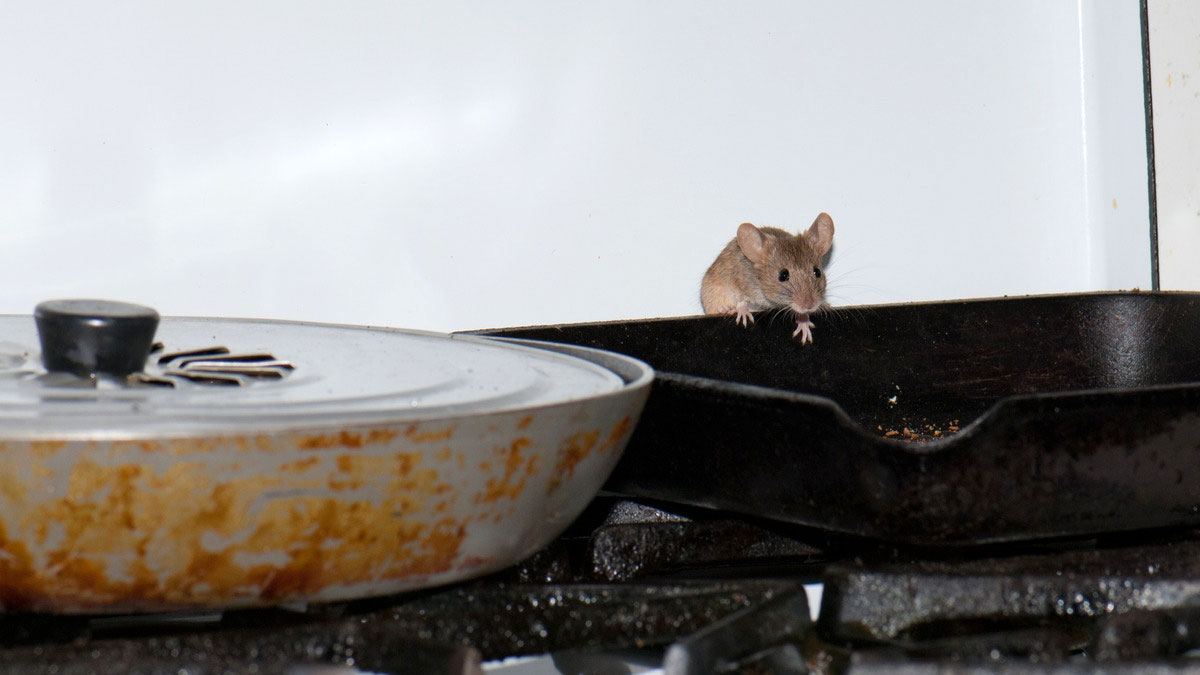

 Just tell me how to get rid of ’em.
Just tell me how to get rid of ’em.